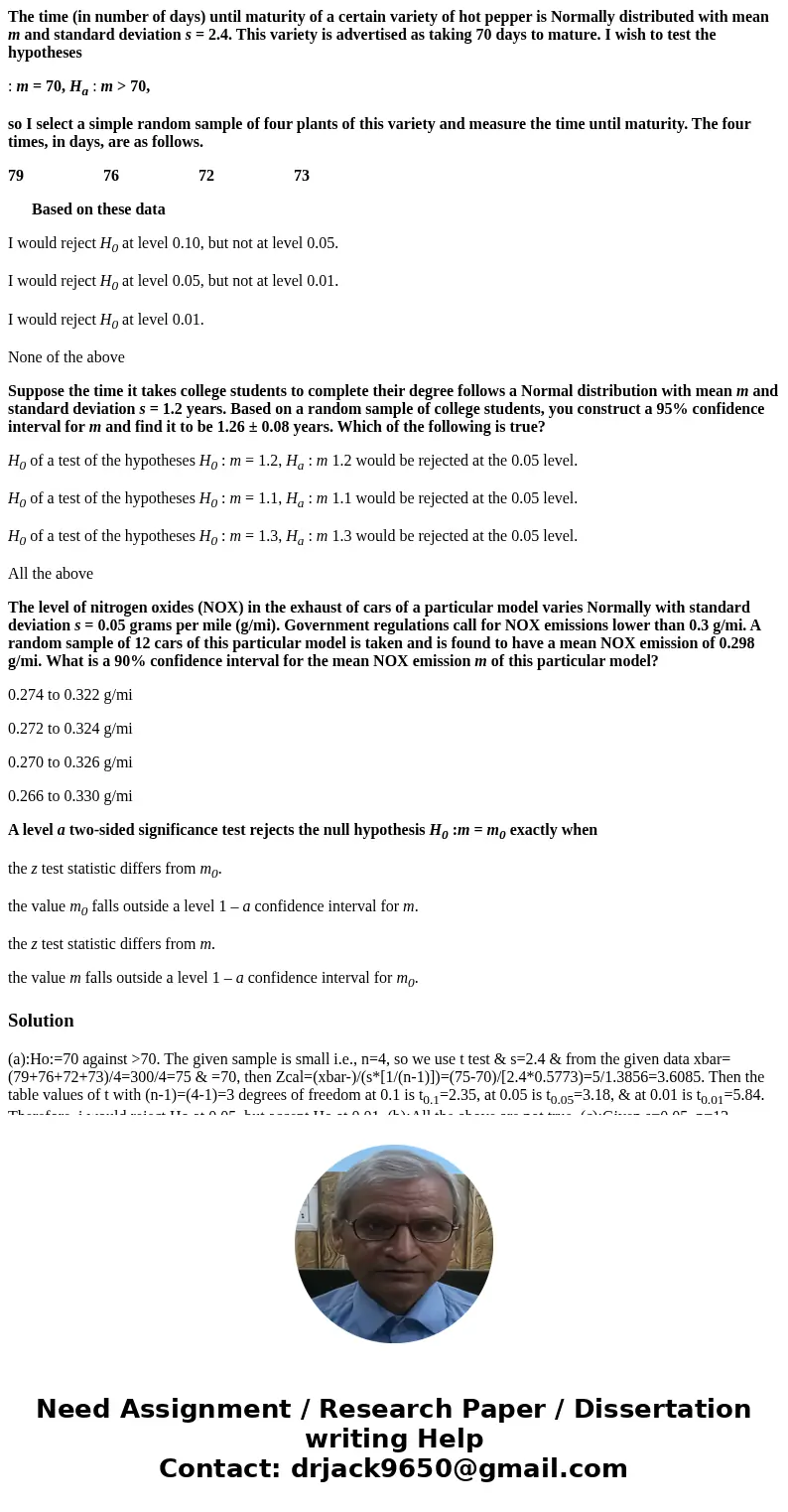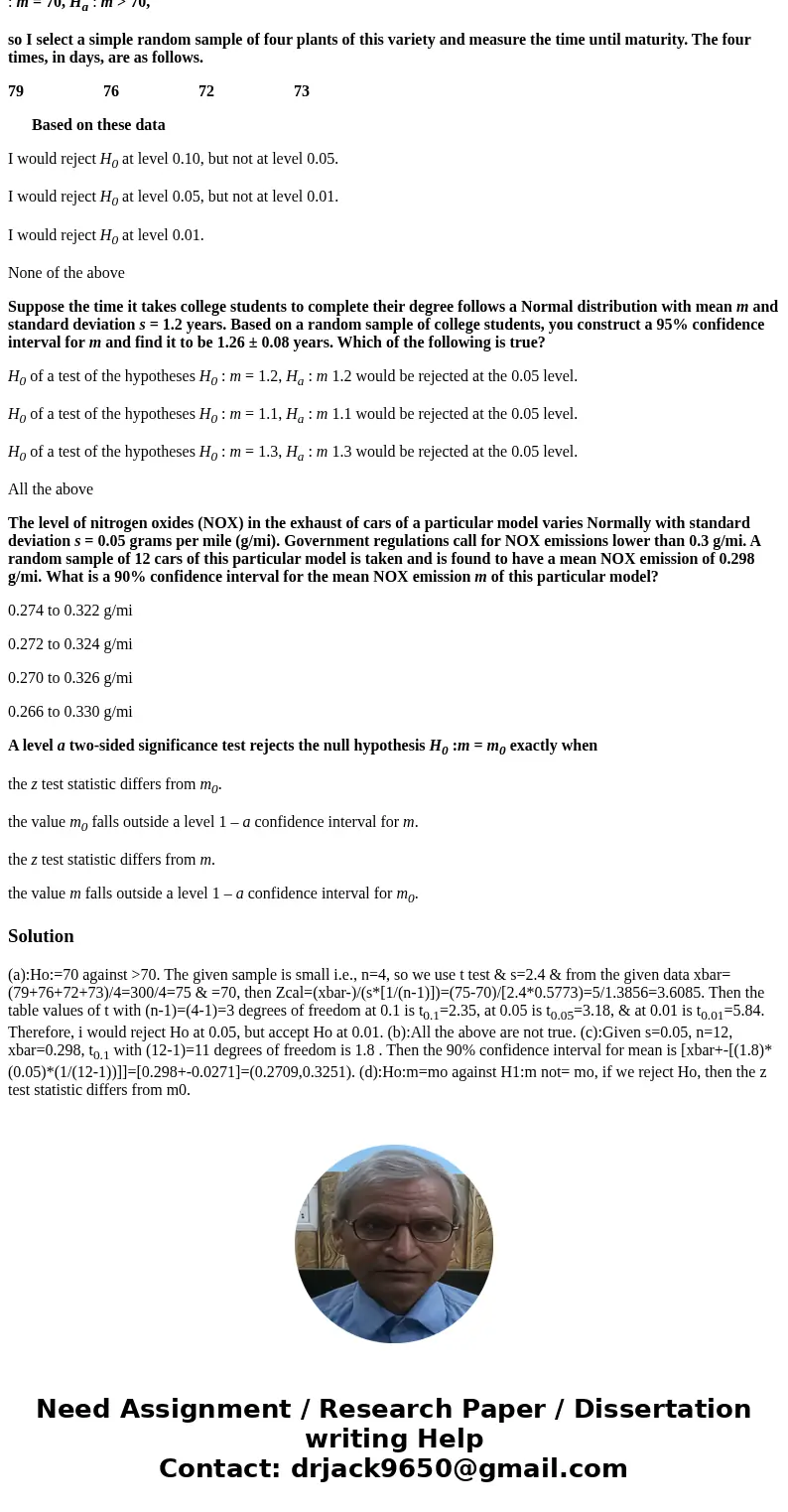The time in number of days until maturity of a certain varie
The time (in number of days) until maturity of a certain variety of hot pepper is Normally distributed with mean m and standard deviation s = 2.4. This variety is advertised as taking 70 days to mature. I wish to test the hypotheses
: m = 70, Ha : m > 70,
so I select a simple random sample of four plants of this variety and measure the time until maturity. The four times, in days, are as follows.
79 76 72 73
Based on these data
I would reject H0 at level 0.10, but not at level 0.05.
I would reject H0 at level 0.05, but not at level 0.01.
I would reject H0 at level 0.01.
None of the above
Suppose the time it takes college students to complete their degree follows a Normal distribution with mean m and standard deviation s = 1.2 years. Based on a random sample of college students, you construct a 95% confidence interval for m and find it to be 1.26 ± 0.08 years. Which of the following is true?
H0 of a test of the hypotheses H0 : m = 1.2, Ha : m 1.2 would be rejected at the 0.05 level.
H0 of a test of the hypotheses H0 : m = 1.1, Ha : m 1.1 would be rejected at the 0.05 level.
H0 of a test of the hypotheses H0 : m = 1.3, Ha : m 1.3 would be rejected at the 0.05 level.
All the above
The level of nitrogen oxides (NOX) in the exhaust of cars of a particular model varies Normally with standard deviation s = 0.05 grams per mile (g/mi). Government regulations call for NOX emissions lower than 0.3 g/mi. A random sample of 12 cars of this particular model is taken and is found to have a mean NOX emission of 0.298 g/mi. What is a 90% confidence interval for the mean NOX emission m of this particular model?
0.274 to 0.322 g/mi
0.272 to 0.324 g/mi
0.270 to 0.326 g/mi
0.266 to 0.330 g/mi
A level a two-sided significance test rejects the null hypothesis H0 :m = m0 exactly when
the z test statistic differs from m0.
the value m0 falls outside a level 1 – a confidence interval for m.
the z test statistic differs from m.
the value m falls outside a level 1 – a confidence interval for m0.
Solution
(a):Ho:=70 against >70. The given sample is small i.e., n=4, so we use t test & s=2.4 & from the given data xbar=(79+76+72+73)/4=300/4=75 & =70, then Zcal=(xbar-)/(s*[1/(n-1)])=(75-70)/[2.4*0.5773)=5/1.3856=3.6085. Then the table values of t with (n-1)=(4-1)=3 degrees of freedom at 0.1 is t0.1=2.35, at 0.05 is t0.05=3.18, & at 0.01 is t0.01=5.84. Therefore, i would reject Ho at 0.05, but accept Ho at 0.01. (b):All the above are not true. (c):Given s=0.05, n=12, xbar=0.298, t0.1 with (12-1)=11 degrees of freedom is 1.8 . Then the 90% confidence interval for mean is [xbar+-[(1.8)*(0.05)*(1/(12-1))]]=[0.298+-0.0271]=(0.2709,0.3251). (d):Ho:m=mo against H1:m not= mo, if we reject Ho, then the z test statistic differs from m0.


 Homework Sourse
Homework Sourse